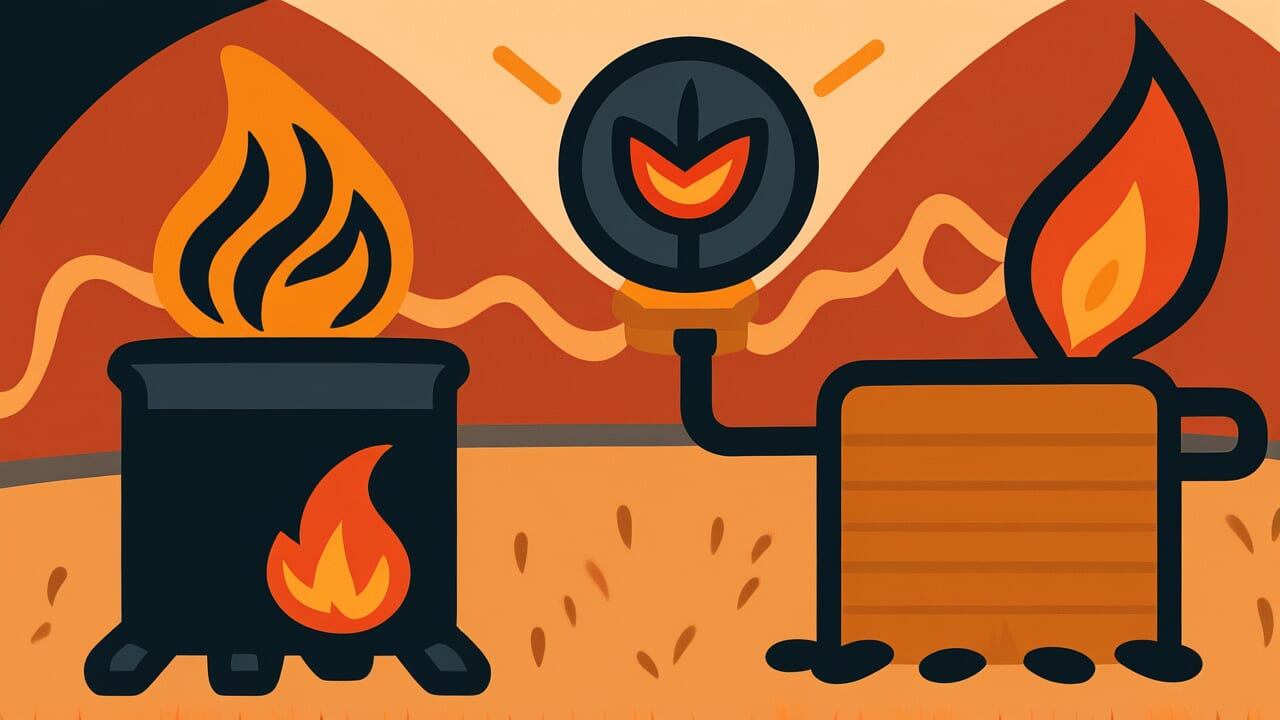How to Read “One fire drives out another”
One fire drives out another
[wun FIRE drives out uh-NUTH-er]
All words are straightforward in modern English.
Meaning of “One fire drives out another”
Simply put, this proverb means that one strong feeling or situation can push out another similar one.
The basic idea comes from how fire actually works. When you light a new fire near an old one, the stronger flame can take over. The proverb uses this image to talk about emotions and experiences. It suggests that powerful feelings don’t just fade away on their own. Instead, they get replaced by other powerful feelings.
We use this wisdom when talking about getting over difficult emotions. If someone feels heartbroken, a new love might drive out the old pain. If you’re angry about something, getting excited about a new project might replace that anger. The key is that both feelings need to be strong. A weak emotion won’t drive out a powerful one.
What’s interesting about this wisdom is how it recognizes that we can’t just stop feeling things. Our minds and hearts don’t work like light switches. Instead, we need something equally powerful to take the place of what we want to change. This makes the proverb both realistic and hopeful about human nature.
Origin and Etymology
The exact origin of this proverb is unknown, but it appears in various forms throughout history. The concept connects to ancient observations about both literal fire and human emotions. Early versions focused on the practical knowledge that controlled burns could stop dangerous fires.
The saying gained popularity during times when people lived closer to fire as a daily tool. Understanding how flames behaved was essential for survival. People noticed that starting a backfire could stop a wildfire from spreading. This practical wisdom naturally extended to describing human experiences and emotions.
Over time, the proverb moved from practical fire management into everyday speech about feelings and situations. Writers and speakers found it useful for describing how people overcome strong emotions. The image of fire made the concept easy to understand and remember. Today we use it mostly for emotional and psychological situations rather than actual fires.
Interesting Facts
The word “drives” in this context comes from Old English, meaning “to push forward with force.” This creates a vivid image of one fire actively pushing another away rather than simply replacing it.
Fire metaphors appear frequently in proverbs across many languages because fire was so central to human survival. The behavior of flames provided endless comparisons for human behavior and emotions.
The proverb uses parallel structure, with “one fire” and “another” creating a balanced rhythm that makes it easy to remember and repeat.
Usage Examples
- Mother to daughter: “Start that new hobby you mentioned – one fire drives out another.”
- Friend to friend: “Maybe it’s time to look for a different job – one fire drives out another.”
Universal Wisdom
This proverb reveals a fundamental truth about how human minds handle intense experiences. We rarely overcome powerful emotions through willpower alone. Instead, we need equally powerful experiences to create change. This reflects how our brains actually process strong feelings and memories.
The wisdom recognizes that trying to simply stop feeling something often fails. Our emotional systems evolved to respond strongly to important situations. These responses don’t disappear just because we want them to. They need to be replaced by something that captures our attention and energy just as completely. This is why distraction works better than suppression for managing difficult emotions.
The proverb also captures something important about human resilience. We have an amazing ability to move forward from painful experiences, but this usually happens through engagement with new experiences rather than withdrawal. The “fire” that drives out old pain might be love, passion, purpose, or even righteous anger about injustice. What matters is that it burns just as brightly as what came before, giving our minds and hearts something new to focus on completely.
When AI Hears This
Our minds work like crowded theaters with limited seats. When something grabs our full attention, it pushes other concerns aside. We cannot hold two burning obsessions at once. The stronger emotion claims the spotlight while weaker feelings fade into darkness.
This happens because intense feelings demand our complete focus to survive. Love needs constant thought to stay alive. Anger requires ongoing fuel to keep burning. When a new powerful emotion arrives, it steals the mental energy that fed the old one. We think we choose what to feel, but really our strongest emotion wins.
What seems like emotional chaos actually follows perfect logic. Our ancestors survived by focusing completely on immediate threats or opportunities. Scattered attention meant death in dangerous situations. Today we inherit this same system that forces us to feel one thing deeply rather than many things weakly. This limitation frustrates us, but it also protects us from being overwhelmed.
Lessons for Today
Understanding this wisdom helps us approach emotional healing more realistically. Instead of expecting difficult feelings to simply fade away, we can actively seek experiences that engage us just as deeply. This might mean pursuing new relationships, creative projects, or meaningful causes that capture our full attention and energy.
In relationships, this principle explains why people often need positive experiences together to overcome conflicts. Simply avoiding problems rarely works as well as creating new, strong positive memories. The same applies to helping others through difficult times. Offering engaging alternatives often helps more than just talking through problems.
For communities and groups, this wisdom suggests that changing negative patterns requires introducing equally powerful positive alternatives. Organizations struggling with poor culture need strong new experiences and practices, not just rules against old behaviors. The new “fire” of shared purpose and positive energy can drive out the old patterns of dysfunction. While this process takes time and genuine commitment, it offers a more hopeful path than simply trying to eliminate what isn’t working.



Comments